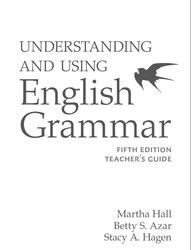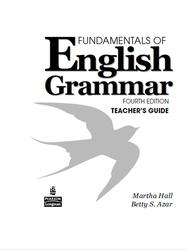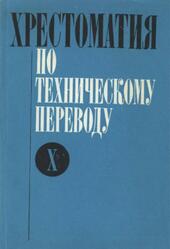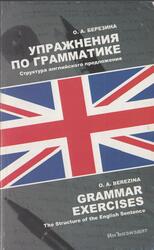This Teacher’s Guide is intended as a practical aid to teachers. You can turn to it for notes on the content of a unit and how to approach the exercises, for suggestions for classroom activities, and for answers to the exercises in the text.
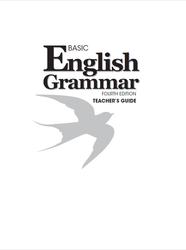
Using Be and Have.
With newly introduced structures, do the exercises first as a class, providing ample guidance. You will need to lead some of your students to the appropriate responses. By directing these first controlled exercises, you will help your students gain confidence for later exercises. In addition, completions where the first few words are missing are often harder for students than completions where a few words at the end of a sentence are missing. As there is no example to model with Exercise 2, be prepared to complete the first item for students.
Ask the strongest students in the class to complete the first two or three items in the exercise.
Correct indicative word order to interrogative word order immediately and definitively, and use the board for further clarification.
Contents.
PREFACE.
ACKNOWLEDGMENTS.
INTRODUCTION.
General Aims of Basic English Grammar.
Suggestions for the Classroom.
The Grammar Charts.
Additional Suggestions for Using the Charts.
The Here-and-Now Classroom Context.
Demonstration Techniques.
Using the Board.
Oral Exercises with Chart Presentations.
The Role of Terminology.
Balancing Teacher and Student Talk.
Exercise Types.
Warm-up Exercises.
First Exercise after a Chart.
Written Exercises: General Techniques.
Open-ended Exercises.
Writing Practice.
Error-Analysis Exercises.
Let’s Talk Exercises.
Pairwork Exercises.
Small Group Exercises.
Class Activity (Teacher-Led) Exercises.
Listening Exercises.
Pronunciation Exercises.
Expansions and Games.
Monitoring Errors in Oral Work.
Optional Vocabulary.
Homework.
The Workbook as Independent Study.
Additional Resources.
Test Bank for Basic English Grammar.
Fun with Grammar.
AzarGrammar.com.
Notes on American versus British English.
Differences in Grammar.
Differences in Spelling.
Differences in Vocabulary.
Key to Pronunciation Symbols.
The Phonetic Alphabet (Symbols for American English).
Consonants.
Vowels.
Chapter 1 USING BE.
1-1 Singular pronouns + be.
1-2 Plural pronouns + be.
1-3 Singular nouns + be.
1-4 Plural nouns + be.
1-5 Contractions with be.
1-6 Negative with be.
1-7 Be + adjective.
1-8 Be + a place.
1-9 Summary: basic sentence patterns with be.
Chapter 2 USING BE AND HAVE.
2-1 Yes / no questions with be.
2-2 Short answers to yes / no questions.
2-3 Questions with be: using where.
2-4 Using have and has.
2-5 Using my, your, her, his, our, their.
2-6 Using this and that.
2-7 Using these and those.
2-8 Asking questions with what and who + be.
Chapter 3 USING THE SIMPLE PRESENT.
3-1 Form and basic meaning of the simple present tense.
3-2 Frequency adverbs.
3-3 Position of frequency adverbs.
3-4 Spelling and pronunciation of final -es.
3-5 Adding final -s / -es to words that end in -y.
3-6 Irregular singular verbs: has, does, goes.
3-7 Like to, want to, need to.
3-8 Simple present tense: negative.
3-9 Simple present tense: yes / no questions.
3-10 Simple present tense: asking information questions with where and what.
3-11 Simple present tense: asking information questions with when and what time.
Chapter 4 USING THE PRESENT PROGRESSIVE.
4-1 Be + -ing: the present progressive.
4-2 Spelling of -ing.
4-3 Present progressive: negatives.
4-4 Present progressive: questions.
4-5 Simple present tense vs. the present progressive.
4-6 Non-action verbs not used in the present progressive.
4-7 See, look at, watch, hear, and listen to.
4-8 Think about and think that.
Chapter 5 TALKING ABOUT THE PRESENT.
5-1 Using it to talk about time.
5-2 Prepositions of time.
5-3 Using it and what to talk about the weather.
5-4 There + be.
5-5 There + be: yes / no questions.
5-6 There + be: asking questions with how many.
5-7 Prepositions of place.
5-8 More prepositions of place: a list.
5-9 Would like.
5-10 Would like vs. like.
Chapter 6 NOUNS AND PRONOUNS.
6-1 Nouns: subjects and objects.
6-2 Nouns as objects of prepositions.
6-3 Adjectives with nouns.
6-4 Subject pronouns and object pronouns.
6-5 Nouns: singular and plural forms.
6-6 Nouns: irregular plural forms.
6-7 Possessive pronouns: mine, yours, his, hers, ours, theirs.
6-8 Possessive nouns.
6-9 Questions with whose.
6-10 Possessive: irregular plural nouns.
Chapter 7 COUNT AND NONCOUNT NOUNS.
7-1 Nouns: count and noncount.
7-2 Using a vs. an.
7-3 Using a / an vs. some.
7-4 Measurements with noncount nouns.
7-5 Using many, much, a few, a little.
7-6 Using the.
7-7 Using Ø (no article) to make generalizations.
7-8 Using some and any.
Chapter 8 EXPRESSING PAST TIME, PART 1.
8-1 Using be: past time.
8-2 Simple past tense of be: negative.
8-3 Past of be: questions.
8-4 Simple past tense: using -ed.
8-5 Past time words: yesterday, last, and ago.
8-6 Simple past tense: irregular verbs (Group 1).
8-7 Simple past tense: negative.
8-8 Simple past tense: yes / no questions.
8-9 Simple past tense: irregular verbs (Group 2).
8-10 Simple past tense: irregular verbs (Group 3).
8-11 Simple past tense: irregular verbs (Group 4).
Chapter 9 EXPRESSING PAST TIME, PART 2.
9-1 Simple past tense: using where, why, when, and what time.
9-2 Questions with what.
9-3 Questions with who and whom.
9-4 Simple past tense: irregular verbs (Group 5).
9-5 Simple past tense: irregular verbs (Group 6).
9-6 Simple past tense: irregular verbs (Group 7).
9-7 Before and after in time clauses.
9-8 When in time clauses.
9-9 Present progressive and past progressive.
9-10 Using while with past progressive.
9-11 Simple past tense vs. past progressive.
Chapter 10 EXPRESSING FUTURE TIME, PART 1.
10-1 Future time: using be going to.
10-2 Using the present progressive to express future time.
10-3 Words used for past time and future time.
10-4 Using a couple of or a few with ago (past) and in (future).
10-5 Using today, tonight, and this + morning, afternoon, evening, week, month, year.
10-6 Future time: using will.
10-7 Asking questions with will.
10-8 Verb summary: present, past, and future.
10-9 Verb summary: forms of be.
Chapter 11 EXPRESSING FUTURE TIME, PART 2.
11-1 May / might vs. will.
11-2 Maybe (one word) vs. may be (two words).
11-3 Future time clauses with before, after, and when.
11-4 Clauses with if.
11-5 Expressing future and habitual present with time clauses and if-clauses.
11-6 Using what + a form of do.
Chapter 12 MODALS, PART 1: EXPRESSING ABILITY.
12-1 Using can.
12-2 Pronunciation of can and can’t.
12-3 Using can: questions.
12-4 Using know how to.
12-5 Using could: past of can.
12-6 Using be able to.
12-7 Using very and too + adjective.
Chapter 13 MODALS, PART 2: ADVICE, NECESSITY, REQUESTS, SUGGESTIONS.
13-1 Using should.
13-2 Using have + infinitive (have to / has to / had to).
13-3 Using must, have to / has to, and should.
13-4 Polite questions: may I, could I, and can I.
13-5 Polite questions: could you and would you.
13-6 Imperative sentences.
13-7 Modal auxiliaries.
13-8 Summary chart: modal auxiliaries and similar expressions.
13-9 Using let’s.
Chapter 14 NOUNS AND MODIFIERS.
14-1 Modifying nouns with adjectives and nouns.
14-2 Word order of adjectives.
14-3 Linking verbs + adjectives.
14-4 Adjectives and adverbs.
14-5 Expressions of quantity: all of, most of, some of, almost all of.
14-6 Expressions of quantity: subject-verb agreement.
14-7 Using every, everyone, everybody, everything.
14-8 Indefinite pronouns: something, someone, somebody, anything, anyone, anybody.
Chapter 15 MAKING COMPARISONS.
15-1 The comparative: using -er and more.
15-2 The superlative: using -est and most.
15-3 Using one of + superlative + plural noun.
15-4 Making comparisons with adverbs.
15-5 Comparisons: using the same (as), similar (to), and different (from).
15-6 Comparisons: using like and alike.
15-7 Using but.
15-8 Using verbs after but.
INDEX.
STUDENT BOOK ANSWER KEY.
Бесплатно скачать электронную книгу в удобном формате, смотреть и читать:
Скачать книгу Basic English Grammar, Fourth Edition, Teacher’s Guide, Hall M., Azar B.S., 2014 - fileskachat.com, быстрое и бесплатное скачивание.
Скачать pdf
Ниже можно купить эту книгу, если она есть в продаже, и похожие книги по лучшей цене со скидкой с доставкой по всей России.Купить книги
Скачать - pdf - Яндекс.Диск.
Дата публикации:
Теги: учебник по английскому языку :: английский язык :: Hall :: Azar
Смотрите также учебники, книги и учебные материалы:
Следующие учебники и книги:
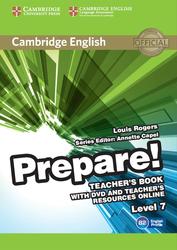 Prepare, Teachers Book, Level 7, Rogers L., 2015 — Prepare! is a lively new seven-level English course for teenagers. It takes learners from A1 to B2 and has comprehensive … Книги по английскому языку
Prepare, Teachers Book, Level 7, Rogers L., 2015 — Prepare! is a lively new seven-level English course for teenagers. It takes learners from A1 to B2 and has comprehensive … Книги по английскому языку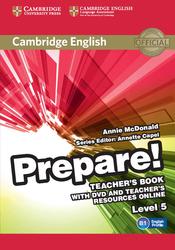 Prepare, Teachers Book, Level 5, McDonald A., 2015 — Prepare! is a lively new seven-level English course for teenagers. It takes learners from A1 to B2 and has comprehensive … Книги по английскому языку
Prepare, Teachers Book, Level 5, McDonald A., 2015 — Prepare! is a lively new seven-level English course for teenagers. It takes learners from A1 to B2 and has comprehensive … Книги по английскому языку Prepare, Teachers Book, Level 4, Chilton H., 2015 — Prepare! is a lively new seven-level English course for teenagers. It takes learners from A1 to B2 and has comprehensive … Книги по английскому языку
Prepare, Teachers Book, Level 4, Chilton H., 2015 — Prepare! is a lively new seven-level English course for teenagers. It takes learners from A1 to B2 and has comprehensive … Книги по английскому языку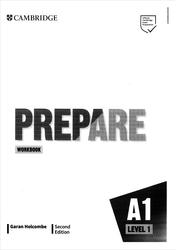 Prepare, Workbook, A1, Level 1, Holcombe G., 2019 — Фрагмент из книги. I always go on holiday with my family - my parents and my two brothers. We travel … Книги по английскому языку
Prepare, Workbook, A1, Level 1, Holcombe G., 2019 — Фрагмент из книги. I always go on holiday with my family - my parents and my two brothers. We travel … Книги по английскому языку
Предыдущие статьи:
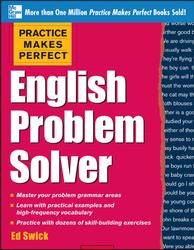 Practice Makes Perfect, English Problem Solver, Swick E., 2013 — This book is aptly named a problem solver. Unlike other publications for learning English, it does not look at all … Книги по английскому языку
Practice Makes Perfect, English Problem Solver, Swick E., 2013 — This book is aptly named a problem solver. Unlike other publications for learning English, it does not look at all … Книги по английскому языку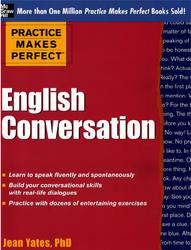 Practice Makes Perfect, English Sentence Builder, Yates J., 2012 — Practice Makes Perfect: English Conversation is designed to give you practice with the vocabulary and structures that are most often … Книги по английскому языку
Practice Makes Perfect, English Sentence Builder, Yates J., 2012 — Practice Makes Perfect: English Conversation is designed to give you practice with the vocabulary and structures that are most often … Книги по английскому языку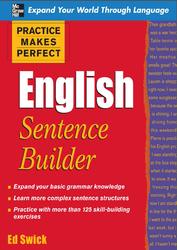 Practice Makes Perfect, English Sentence Builder, Swick E., 2009 — Writing skills are usually the most diffi cult skills to acquire in a language. Th is is particularly true in … Книги по английскому языку
Practice Makes Perfect, English Sentence Builder, Swick E., 2009 — Writing skills are usually the most diffi cult skills to acquire in a language. Th is is particularly true in … Книги по английскому языку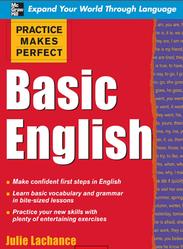 Practice Makes Perfect, Basic English, Lachance J., 2009 — Congratulations on your decision on choosing Practice Makes Perfect: Basic English for your fi rst year of English language learning. … Книги по английскому языку
Practice Makes Perfect, Basic English, Lachance J., 2009 — Congratulations on your decision on choosing Practice Makes Perfect: Basic English for your fi rst year of English language learning. … Книги по английскому языку

